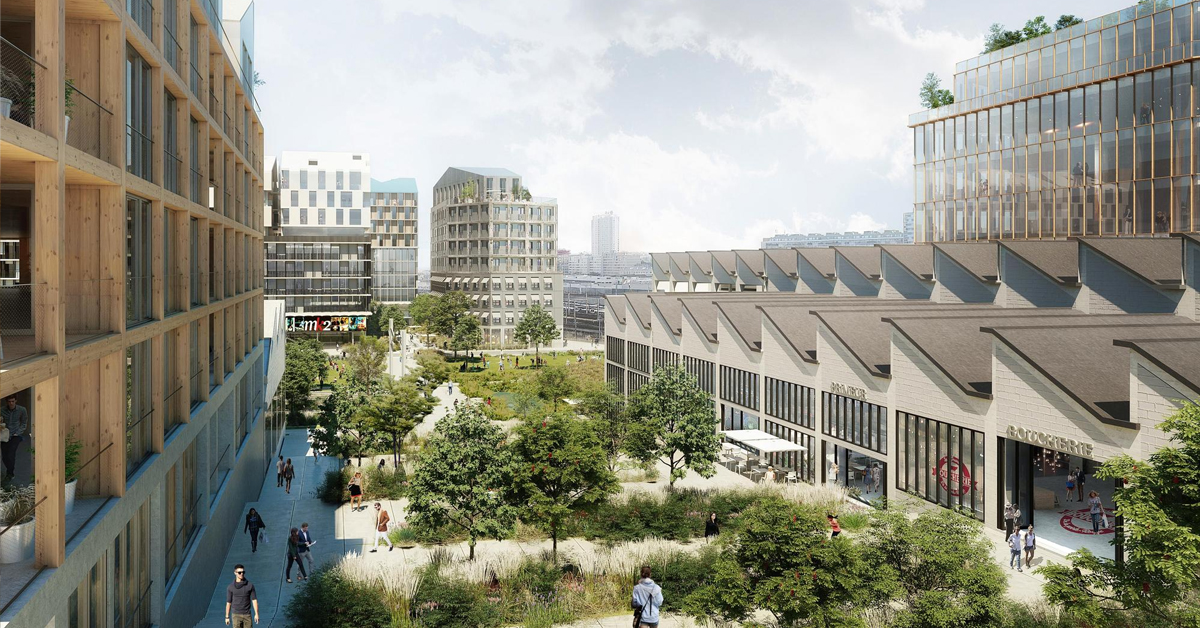Urban planning is the process of developing and designing urban areas to meet a community’s needs. It includes architecture, engineering, economics, sociology, finance, and a variety of other fields. So, if you’re an architecture student, you may find it interesting and can do research papers while pursuing it in the top M Plan colleges in India. So, let’s begin with a query, have you ever considered why your city requires urban planning? A good, healthy place to live, work, and move around in an urban setting is the result of careful planning and effort.
FIVE Reasons that Cities Require Urban Planning:
You should support urban planning for the following reasons:
- The city’s development: It is always most effective when it is based on a framework that meets the current and future needs of the population. the advancement in areas like equity, effective emergency management, public welfare, and community participation. It must be in a setting that can handle the number of residents. The primary goals of this city’s development are increased productivity and life security.
- Standard of living: When developing the infrastructure plan, urban planning takes into account the quality of life, and clear regulations for public spaces are implemented. The city’s layout is designed to make it easy for residents to get to all the necessary services and amenities.
- Environmental Health: The proper management of waste, a degree of control over greenhouse gas emissions, and the distribution of resources are all made possible by city planning, which also considers the health of the population. The actions taken to protect the environment include planting trees, reducing the amount of fuel consumed by public transportation, and raising public awareness of the ecological harm that citations can cause if they are not maintained properly.
- Utilization of resources and the economy: The elements of the city, such as the rise of the city economy When well-developed cities have job markets, it can be done. Urban planning, on the other hand, ensures that more jobs are available while living costs go down.
- Greater Trustworthiness: The transformation of cities will undoubtedly draw attention in the future and make them safer places for many residents, visitors, and tourists. The development, stability of the economy, and interactions within the community all reflect on a city’s credibility.
The fundamental ideas of urban planning are covered in your course in B Planning colleges, but it is important to remember that architects enable people to live sustainably in the modern world.
What types of urban planning are there?
Because the histories, needs, and spaces of different cities are not the same. The licenced architects from architecture colleges in Coimbatore must comprehend the reasoning behind the design in order to deliver the outcomes that the customers desire. Below are the categories to help you decide what kind of urban planning projects to allocate architects for.
- Planning strategically: When deciding where a city wants to grow, focus on big goals. The strategic plan accomplishes a number of objectives, including making it easier to travel throughout the city, expanding the number of community spaces, enhancing the quality of life, and encouraging people to visit or move to the city.
- Planning for land use: This relates to the adoption of government status, regulations, rules, codes, and policies to influence land use in the context of legislation and policy. The strategic plan should be discussed and communicated with the relevant stakeholders to ensure that the plan is understood by a wide range of parties.
- Strategic planning is for building on undeveloped land or for greenfield development projects. In order to proceed with the projects, urban planners should be aware of the land use and infrastructure plan. This plan requires the expertise of professionals who can provide insight and guarantee that the plan takes into account all possible angles to complete the space.
- Urban Redevelopment: Concentrate on enhancing the areas that are experiencing a decline. This means that the number of failing businesses in the city slows population growth. In this case, you need to start planning based on how people interact with each other in the community, switch from industrial to residential use, and include environmental planning in order to clean up the places.
- Ecological planning: Additionally, it is strategic planning with a primary emphasis on sustainability. Air pollution, noise pollution, wetlands, endangered species, flood zones, and coastal erosion are all part of urban planning, as is the connection between natural and human systems.
- Planning for the infrastructure: encompasses public work infrastructure, community infrastructure, safety, and transportation, as well as the fundamental facilities and systems that serve the city and its inhabitants.
What role does architecture play in the planning of cities?
When it comes to urban city planning, it is true that architectural engineering positions are in high demand. Demand for the service stems from the growing interest in eco-friendly urban planning, urban space renewal, and space efficiency. In addition, it is now anticipated that an architectural engineer from one of India’s best architecture schools will be hired to plan, design, and supervise the construction, road routing, and landscaping in order to improve the urban environment.
The majority of ancient architects focused on visuals, but current trends have changed. Since the city’s safety, natural and man-made disasters, environmental laws, resource conservation, energy use, and historical touch are more pressing concerns for architects today, when it comes to urban planning, the planner ought to become an architect and engineer in order to manage the city’s growth over the long term and satisfy residents’ needs.
Architecture engineering’s scope:
You can also think that urban planning can be done by a designer; why not experts in architecture and engineering?
Experience and knowledge are the reasons to expect architectural engineering or architects from the top M Plan Colleges in India. Engineers who are great at utilising devices or projects like AutoCAD, 3D Displaying, or other visual programming. Second, it is possible for architects, engineers, and urban planners to combine urban characteristics with modern accessibility and efficiency requirements. Most of the time, architects focus on a building’s aesthetics more than its functional aspects, so it would be beneficial to hire someone who can manage costs while also carrying out the goals of urban planning. As a result, there is a growing demand for architects and engineers, and once you have completed your education, it would be wise to consider enrolling in one of India’s best architecture colleges.






